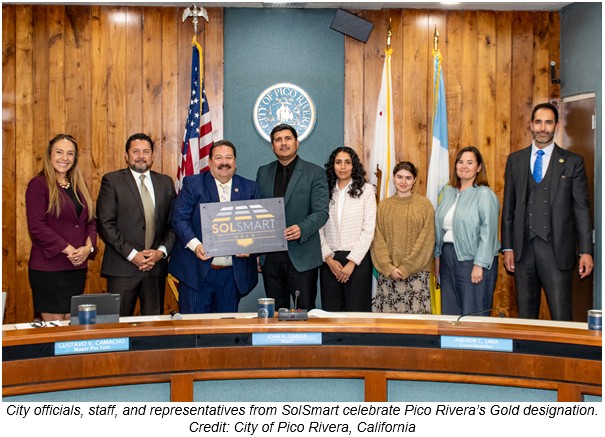The most (and least) solar friendly states in 2024

Solar policy at the state and local level has a big impact on solar adoption. Look no further than California’s changes to net metering. A recent CNET analysis evaluated each state’s residential solar policies to determine which are the most solar-friendly states (affordable) for the average resident.
New Jersey ranked as the most solar friendly state, the only state to earn an “A”. Washington D.C., New Mexico, Maryland and Illinois weren’t too far behind, each scoring a “B”. The majority of the states received an “F”, with Nebraska, Oklahoma, Wyoming, Mississippi and Utah scoring the lowest.
For this analysis, each state was evaluated in eight categories: state solar tax credit or similar incentive, net metering policy, property tax exemption for residential solar panel systems, sales tax exemption for residential solar panel systems, community solar policy, solar program availability for low-income households, state renewable portfolio standards (RPS) and the state’s total investment in solar per capita.
Top 5 Solar-Friendly States Bottom 5 Solar-Friendly States 1. New Jersey 52. Nebraska 2. Washington D.C. (Tie) 49. Oklahoma 3. New Mexico (Tie) 49. Wyoming 4. Maryland (Tie) 49. Mississippi 5. Illinois 48. Utah
What makes a solar-friendly state?
To find the most solar-friendly states, CNET ran each state through a scoring methodology considering eight categories. Each category was given a weight based on the impact their editors think it has on a consumer’s ability to go solar. Categories were selected based on policies and incentives that apply to all or most of a state’s residents — like state tax credits, tax exemptions and net metering policies. States that make solar incentives accessible to all earn higher marks.
Here are the categories and weights:
- State solar tax credit (or equivalent incentive): 25%
- Net metering: 15%
- Property tax exemption: 15%
- Sales tax exemption: 10%
- Community solar policy: 10%
- Low-income solar program availability: 10%
- Renewable portfolio standards: 10%
- Total investment in solar per capita: 5%
The final score was converted into a letter grade. States were graded on a curve to account for differences between states making more apparent effort than others.
Most solar-friendly states
While there are a handful of states doing a decent job crafting solar-friendly policies, New Jersey received the highest marks for its solar policies and incentives. New Jersey offers incentives that can significantly reduce a consumer’s solar payback period, including retail net metering and a robust market for solar renewable energy credits. Solar panel systems are also fully exempt from property and sales tax in New Jersey, potentially saving you thousands of dollars. Community solar, as well as solar programs for low-income households, also help make solar energy accessible and affordable for renters and households that can’t install solar panels on their own.
“Solar panels are expensive, and the most solar-friendly states have policies that recognize that,” said Tyler Graham, associate writer at CNET and co-author of this report. “Whether that’s in the form of a solar renewable energy credit market that allows you to recoup a lot of that cost over time, or a tax credit that provides savings up front, these states have approaches that significantly shorten the period of time before solar panels pay for themselves.”
After New Jersey, Washington D.C. ranks as the second most solar-friendly state, earning a “B”. DC’s high rating is attributed to potential SREC earnings, retail rate net metering, full property and sales tax exemptions for solar panels and comprehensive rooftop solar and community solar programs for low-income households.
New Mexico earned a “B” as well, receiving high marks in nearly every category of the scoring methodology. It’s also one of the few states in the US that offers its own solar tax credit, allowing you to recoup 10% of the cost of your solar system, up to $6,000.
Maryland and Illinois were the final two states to receive a “B”. Rhode Island, Massachusetts, New York, Oregon, and Minnesota ranked among states that scored a “C”.
Least solar-friendly states
Every state has room to improve when it comes to solar policy. However, many states are lagging behind. Based on the evaluation criteria, Nebraska ranked the lowest in the US for solar-friendliness, earning an “F”.
The only statewide solar incentive offered in Nebraska is state-regulated net billing, which is a step down from traditional net metering. With net billing, your utility compensates you at the wholesale/avoided cost rate instead of the retail electric rate for your excess solar energy.
“The least solar-friendly states in our scoring are not providing an incentive for their residents to go solar,” said Sarah Drolet, a writer at CNET and co-author of this report. “Many of these states have policies that limit how much money consumers get for selling energy back to the grid, and they lack tax credits and deductions that would reduce the initial cost of solar panels. Although you can still get solar panels in these states, and they might still be a wise investment, these policy choices make it take a longer time for residents to recover the cost.”
Oklahoma, Wyoming and Mississippi all tied for the second-lowest spot for the same reason: These states do not provide residents enough incentive to go solar. Much like Nebraska, these three states also only offer statewide net billing, lengthening the solar payback period for those installing solar within these states.
The rest of the 27 states that received an “F” include Ohio, North Carolina, Michigan, Montana, Idaho, Nevada, Indiana, Louisiana, Alaska, Texas, Iowa, Alabama, Pennsylvania, Kansas, Arkansas, Tennessee, West Virginia, South Dakota, Missouri, North Dakota, Kentucky, Georgia, and Utah.
“Your state’s policies regarding solar panels can play a significant role in the affordability of going solar, but that doesn’t determine whether or not it’s right for you,” said Jon Reed, a senior editor at CNET. “While living in a state with unfavorable policies won’t help, it’s ultimately your own financial situation and personal choices that matter. Don’t be discouraged by a low grade for your state. Instead, do the math for yourself, and don’t forget the federal solar tax credit of 30%, which is available in every state.”





Comments are closed here.